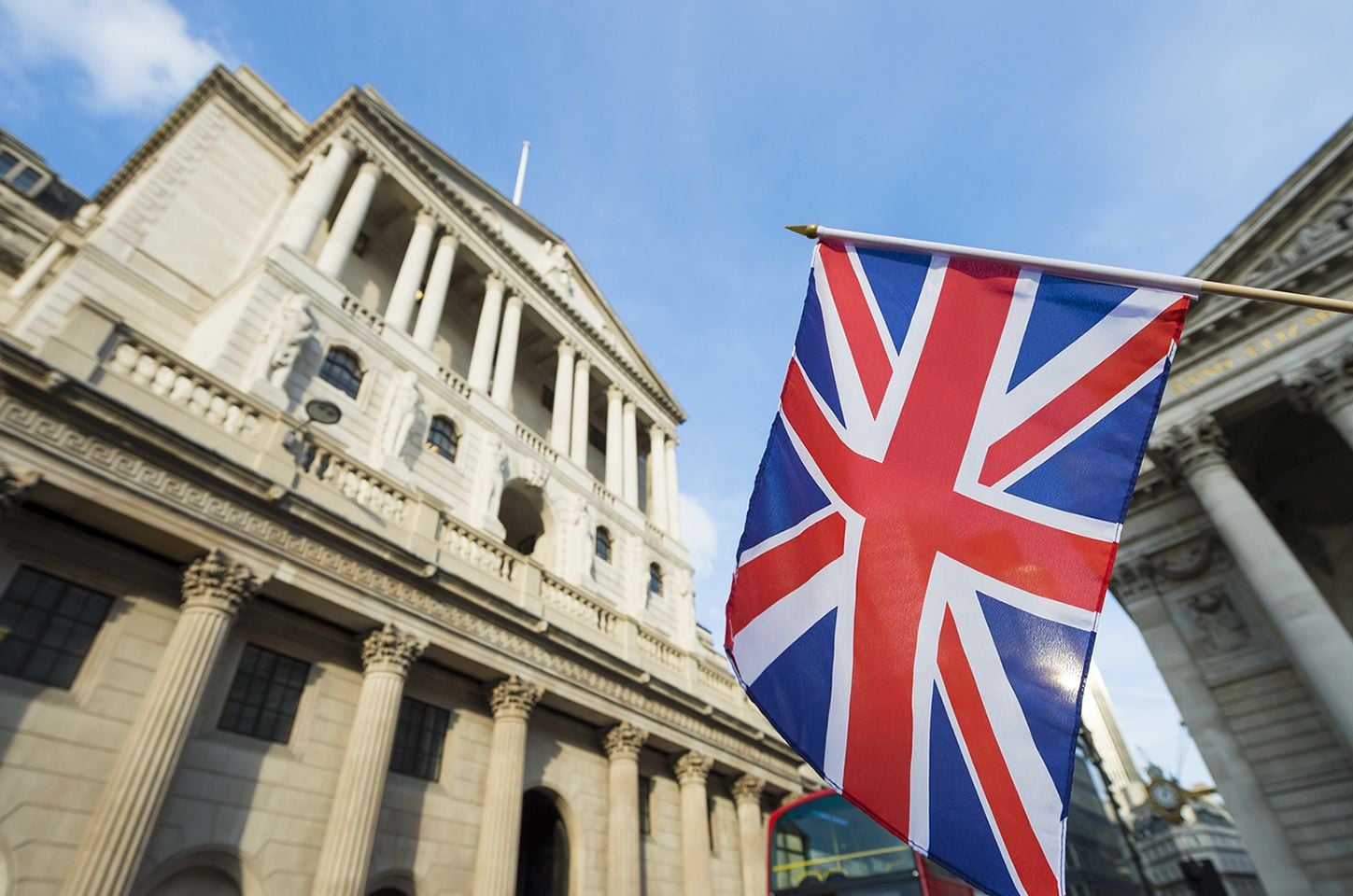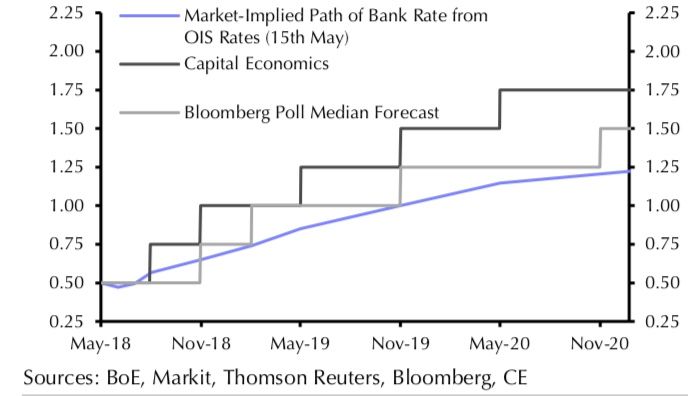British Pound Forecast to Rise into Year-End as BoE Delivers Two Interest Rate Rises: Capital Economics

The Bank of England could surprise markets with two interest rate rises in 2018. Image © lazyllama, Adobe Stock
Two interest rate rises in 2018, followed by a further two interest rate rises in 2019 at the Bank of England are forecast to propel the British Pound higher against both the Euro and US Dollar say economists at independent advisory Capital Economics.
Driving the decision to raise interest rates four times in two years will be the realisation that the soft run of economic data releases suffered by the UK at the start of 2018 is in fact transitory, and a decent recovery in economic growth over coming months will surprise an increasingly pessimistic market.
"Like the MPC, we think that temporary factors were behind the slowdown, and suspect that growth will bounce back in Q2," says Jonathan Loynes, Chief Economist at Capital Economics in London.
The Bank of England's Monetary Policy Committee (MPC) opted to keep interest rates unchanged at their May policy meeting in response to a slowdown in UK economic data activity which was cemented by a GDP print for the first quarter registering at a paltry 0.1%.
In the weeks and months leading up to the May decision money markets had been pricing with near-certainty an interest rate rise of 0.25% to be delivered, and the dawning of the realisation that this was a wrong assumption was keenly felt by Sterling which relinquished 2018 highs against both the the Euro and Dollar. Indeed, markets began to bet that there might in fact be no interest rate rises at all this year.
"If we are right in thinking that growth will surprise on the upside over the rest of the year, interest rates would surely rise by more than the very modest tightening – of just one hike this year and next – that is currently priced into financial markets," says Loynes.
Capital Economics point out annual regular wage growth was already above the MPCs full year forecast in Q1, with the May wage release from the ONS confirming an improving trend having reported the average earnings index was up by 2.9% in April, "the more hawkish members of the Committee are mindful of falling behind the curve," says Loynes. "We expect two hikes this year, and a further two in 2019, taking Bank Rate to 1.5%."
These expectations are certainly some of the more bullish that we have seen coming out of the analyst community, and it should come as no surprise they translate into forecasts for a stronger Pound.
Capital Economics think rising interest rates at the Bank of England should push the 10-year gilt yield up to 2%; this is beneficial to Sterling now that foreign exchange markets are focussed on global bond yields. One of the stories at present is the sharp rise in the value of the US Dollar thanks to the superior yields being delivered by US treasuries. We note that this dynamic could also be supporting Sterling, owing to the relatively superior yield delivered by gilts, particularly when compared to those being delivered in Germany bunds.
Above: The UK's superior interest rate yield relative to its Eurozone equivalent points to Sterling upside.
Capital Economics are forecasting the Pound-to-Dollar exchange rate to trade at 1.55 by the end of 2019, and the Pound-to-Euro exchange rate at 1.19 at that time.
The end-2018 Pound-Euro exchange rate is seen at 1.20, and the Pound-Dollar rate seen at 1.50.
"However, Brexit developments clearly pose a risk to our exchange rate forecasts. Notably, a breakdown in the negotiations on the final relationship or a failure to agree a solution on Northern Ireland could weigh on the Pound," warns Loynes.
What is striking is that Capital Economics do not see the Pound-Euro rate moving much beyond 1.19 over coming years, as a process of raising interest rates in 2019 at the European Central Bank should start supporting the Euro. "Only in 2020 do we see sterling falling back, to €1.15/£, as rising interest rates in the Eurozone begin to work in favour of the Euro."
Advertisement
Get up to 5% more foreign exchange by using a specialist provider to get closer to the real market rate and avoid the gaping spreads charged by your bank when providing currency. Learn more here.
Data in the Week Ahead: Watch Inflation
Clearly, the delivery of two interest rates in 2018 will depend on the data, and we would look for an immediate pick-up in the data pulse.
For the coming week, the economic release calendar is a busy one.
"Tuesday’s CPI inflation figures will be watched for clues on how quickly CPI inflation is moderating. We expect to see inflation tick up to 2.6% from 2.5%, albeit with the April rise likely to be a blip on a path in which we see inflation moderating." says Victoria Clarke, an economist with Investec.
Global oil prices have been on the rise, and we would expect this to perhaps reflect. The core CPI release will therefore be crucial as it strips out the likes of external one-offs like oil, and the Bank of England uses the number as a proxy for underlying wage growth. In short, a beat on the core CPI would likely help Sterling higher. Core is forecast to read at 0.5%.
In other UK releases, retail sales figures due Thursday morning will also be closely watched amidst concerns about UK growth (and consumer spending) momentum.
The BRC’s April figures were particularly weak, with the timing of Easter a depressing factor; we suspect the ONS’s Easter timing adjusted numbers will not look quite so gloomy.
The second estimate for UK GDP growth is due at the end of the week where Clarke suspects we will see an unrevised reading of +0.1% print. A beat would however likely boost Sterling.






